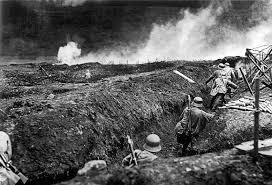Revolt of 1857 | Causes
Causes for the Revolt of 1857

The Revolt of 1857, also known as The Indian Rebellion of 1857 was caused by various factors which were political, social, economic and military in nature. Though it ultimately failed to achieve its goal, the rebellion was successful in generating national consciousness among the people about the political future of the country and in giving a political past to the successive freedom struggles. The 1857 war of Independence was the culmination of various political, economic, social and military causes which burst forth in the from of the cartridge controversy, finally resulting in the Indian Sepoy Mutiny where a soldier named Mangal Pandey was the first to break rank. Given below are the chief causes of the 1857 War of Independence :
POLITICAL CAUSES
- Policy of Annexation : The aggressive annexation policy of East India Company deprived many rulers of the kingdoms causing mass unemployment in the erstwhile kingdoms. The feeling of alienation among the public against the foreign created a fertile ground for resentment which would later express itself in the form of the Revolt of 1857.
- The Doctrine of Lapse : This policy brought about by Lord Dalhousie stipulated that any princely state which was misgoverned or whose ruler died without a legitimate heir would lapse into the British subsidiary system. This was a blatant disregard of the right of a sovereign to choose an heir and the Doctrine was used as a pretext to annex many Indian princely states. Rani of Jhansi was deprived of her kingdom under this principle. Similarly, Awadh was annexed under this Doctrine.
- Disrespect Shown towards the Mughal Ruler : The humiliation meted out to Bahadur Shah Zaffar was a major political cause in the 1857 Rebellion. Because the Mughal emperor was still viewed with respect in political imagination, the disrespect shown towards him was resented by the people. This disrespectful attitude was also opposed by the Muslims of the country.
ECONOMIC CAUSES
- Exploitative Economic Policy : The economic measures of The East India Company caused a massive destruction of the village economy and had a negative impact on the commerce, trade and agriculture. Massive de-industrialization of the country uprooted local means of employment.
- India Reduced to an Importer : India turned from a huge exporter of precious items to an importer of British cloth. British goods were imported at exorbitant prices while raw cotton and jute were exported from India at ridiculously low rates.
- Plantations for British Interest : Imposition of forceful plantation of cash crops (like Indigo and Tea ) for British interests instead of food crops not only reduced the capacity of farmers to grow crops but affected them economically as they were paid very low for their labour and agricultural produce.
- Exploitative Land Revenue System : Heavy taxation on the farmers and landholders led to the ruin of people who were in charge of agricultural production. All the three land tenure systems Zamindari system, Ryotwari system and the Mahalwari system were tools to perpetuate the exploitation land revenue system.
- Massive Unemployment : Total uprooting of artisans and local sources of employment was another cause why the Revolt of 1857 could be brought about. The dissolution of courts following the annexation of princely states by the British left many highly skilled artisans virtually jobless.
SOCIAL CAUSES
- Christian Missionary Activity : Religious activity of the Christian missionary was regarded with deep distrust by Hindus and Muslims alike. It was viewed as an attempt to wean people off their religious faith.
- Reformation Policies : Some social reformation policies were seen by many as a a direct attempt to challenge their religion. These included steps like abolition of Sati in 1829, Widow Remarriage Act in 1856 and the Religious Disabilities Act of 1856 . Attempts at tinkering with the caste system was also seen as an affront to religion.
- Misinterpretation of Technology : Further technology was views with great suspicion. For example, the seating arrangement in railway coaches was interpreted as an attempt to dilute caste hierarchies by forcing passengers to share the seat with people belonging to want was known “lower caste”. On similar lines, telegraph poles were thought to be erected with the motive of hanging people.
- Religious Taxation : Taxation on religious places like temples and mosques was seen as yet another attempt to undermine religious faith.
MILITARY CAUSES
- Ill Treatment of Soldiers : The differential treatment among the British and Indian soldiers was restented by Indian sepoys who weren’t entitled to promotion or payment on par with their British counterparts. This was in violation of the Charter Act of 1833 which guaranteed equality of employment. An Indian could never rise above the rank of a subedar irrespective of his merit. Also, the foreign allowance which was provided to the soldiers on overseas duty was scrapped, depriving them of a significant source of income.
- Mass Unemployment of Defeated Armies : The defeat of princely states rendered swathes of soldiers unemployed as there was no need to maintain large armies. The soldiers had double reason to hate the British : not only were they subdued by a powerful enemy but were also rendered unemployed.
- Military and Caste : Military rules which forced inter-caste interaction was seen as an assault on the caste system. Likewise, the deployment of soldiers to foreign lands wasn’t taken well by Brahmin sepoys who ,as per the Kala Pani ( Black Water) taboo, ran the risk of losing their caste if they crossed the sea.
- Myth of British Invincibility Demolished : The defeat of the British in the First Anglo-Afghan War was a blow to British prestige and led to renewed confidence among the Indian soldiers to take on the British who had earlier been viewed as invincible.
IMMEDIATE CAUSE
The introduction of the Enfield Rifle which replaced the Brown Bess was the immediate cause for the Revolt of 1857. The new rifle system required one to bite off the cartridge before being loaded into the rifle. The cartridges were supposedly greased with the fat of pigs and cows. Because cows are sacred to Hindus and unclean unclean for Muslims, this sparked off intense rebellion in the form of Indian Sepoy Mutiny against the East India Company which finally precipitated in the First Struggle for Independence in 1857.


